What is visitor management software and why do you need it?
First impressions are made at the front desk. And if your visitor management solution isn’t keeping up, it’s time to rethink it.
The Visitor Management System (VMS) market is booming. It was valued at $2.29 billion in 2024, and is projected to reach $7.34 billion by 2034, according to Market Research Future.
That’s serious momentum and it’s being driven by these challenges:
- Security threats: Organizations are under pressure to protect people, property, and information. And that starts with knowing exactly who’s walking through the door.
- Compliance: From health forms to NDAs, many industries need airtight visitor records and audit trails.
- Operational efficiency: Long lines at reception and manual check-ins don’t cut it anymore, especially when hybrid workforces are in flux.
Every major sector is stepping up:
- Healthcare needs to control access and ensure patient safety.
- Education is improving campus safety and visitor flow.
- Corporate offices are managing hybrid workforces and guest experiences.
- Government agencies need to uphold strict access protocols.
- Manufacturing facilities are focused on sensitive site access and compliance.
Modern visitor management software replaces manual check-ins with tools like QR codes, digital forms, pre-registration, and real-time monitoring that aren’t just more secure, they vastly improve the visitor experience.
In this guide, we’ll answer common questions and break down how to choose a visitor management system.
Find out more about hybrid teams in the workplace.
What is visitor management software?
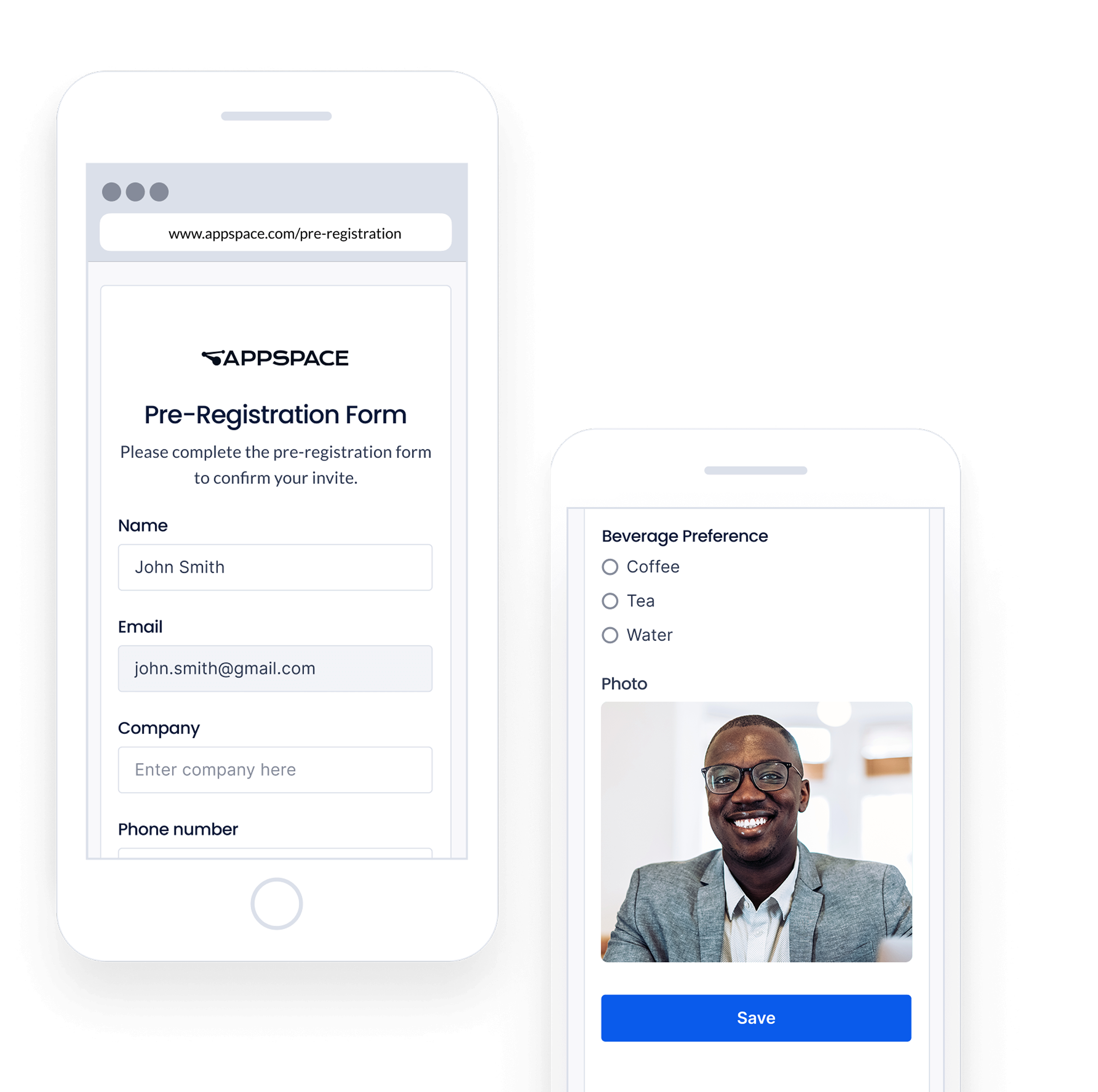
Visitor management software is a digital system for registering, tracking, and managing guests in your workplace. It replaces paper logbooks with secure, automated workflows, often including pre-registration, QR code check-ins, badge printing, and real-time tracking.
In an era of hybrid work and heightened compliance requirements, knowing who’s in your building and why is essential.
What problems does a visitor management solution solve for facilities and security teams?
For many facilities and security teams, modern visitor management systems solve long-standing challenges. They make check-ins faster, improve visitor tracking, and give teams real-time insight into who’s on-site. With consistent policies and automated recordkeeping, it’s easier to stay compliant and audit-ready across every location.
A good visitor management solution automates check-in, tracks activity in real time, and gives you full visibility into who’s on-site, without relying on spreadsheets or manual follow-ups.
How does visitor management software improve workplace security?
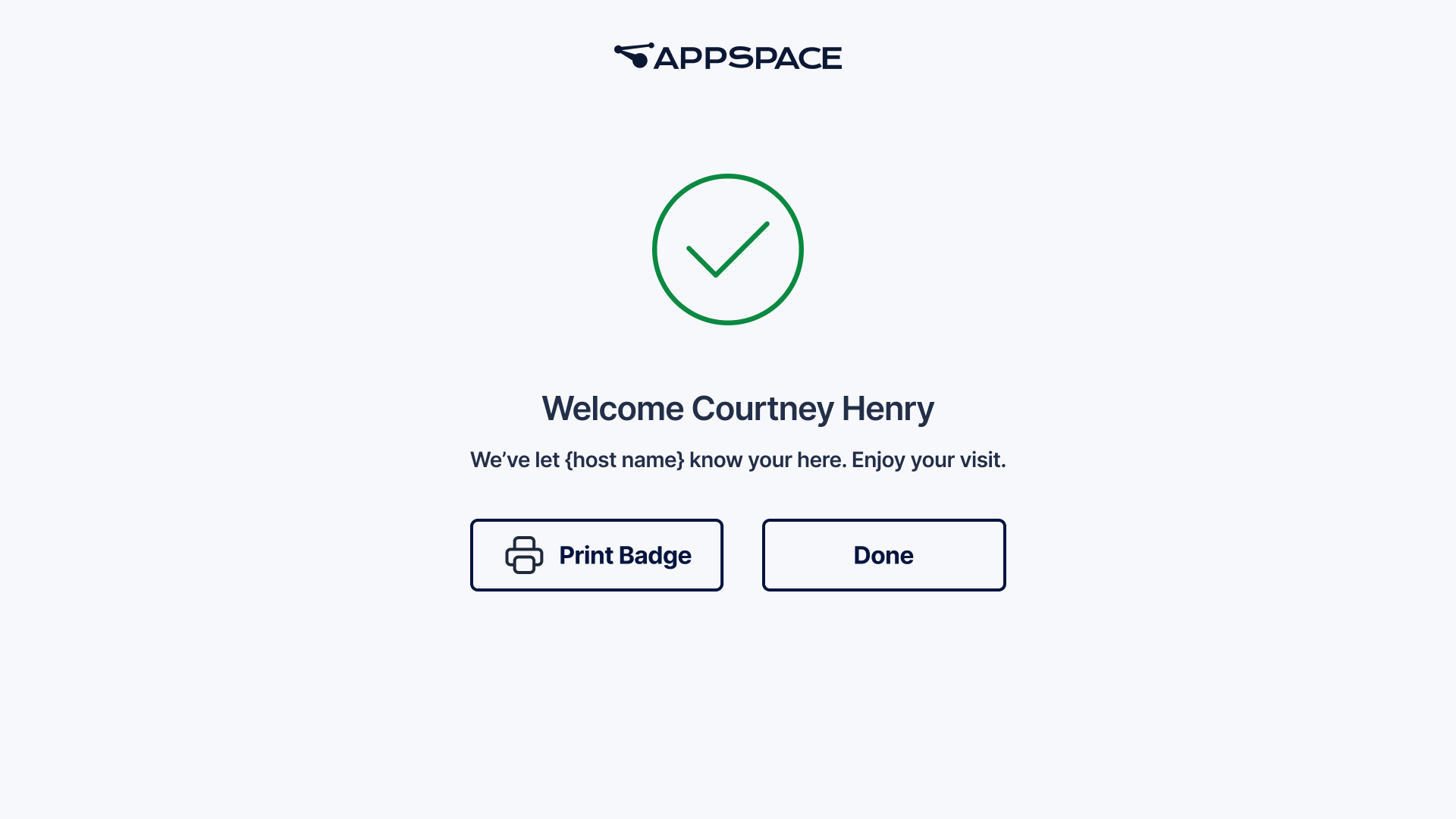
Security leaders love visitor management systems because they provide structure and accountability, while keeping things flowing. Key features include:
- Photo ID capture
- Real-time visitor logs
- Watchlist alerts
- Custom access levels or expiration times
- Instant host notifications
- Secure badge printing with QR codes
Combined, these tools let you protect your spaces, comply with regulations, and respond quickly during emergencies and give you clear, auditable data.
How can a visitor registration system improve the visitor experience?
A fast, frictionless check-in sets the tone. Key features include:
- Pre-registration links sent by hosts
- Touchless check-in via QR code
- Interactive kiosks with clear instructions
- Customizable welcome screens
- Branded, professional badges
- Automatic host notifications when visitors have checked in
This helps facilities teams deliver a professional, welcoming, human-centered experience for everyone, even when foot traffic is unpredictable.
What features should you look for in a visitor management solution?
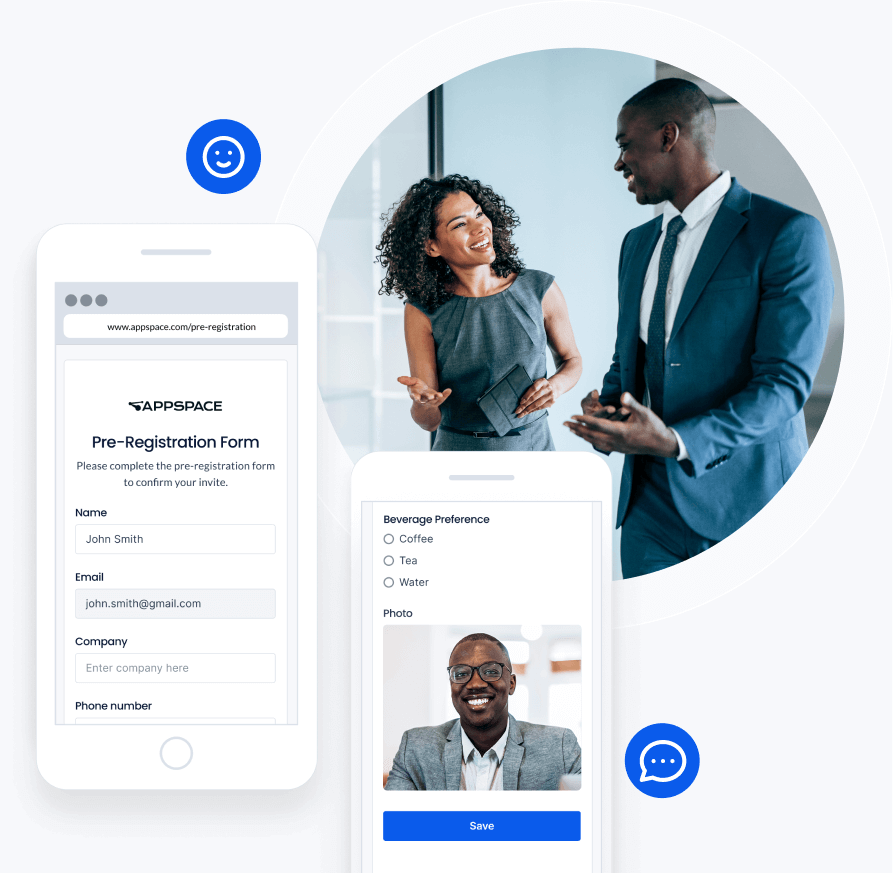
If you’re evaluating visitor management solutions, look for tools that give you flexibility, scale, and control. Your shortlist should include:
- Pre-registration and mobile check-in.
- Custom check-in workflows by visitor type
- Host notifications (via email, Teams, Slack, Webex)
- Photo capture and badge printing
- Digital NDAs, health forms
- Emergency evacuation support
- Integration with Outlook, Google Calendar, and directory services
- Analytics, reporting, and admin controls for multi-site management
Don’t settle for a tool that only works at the front desk, choose one that supports your entire workplace strategy.
How does visitor management software support hybrid workplaces?
In hybrid offices, visitor tools do more than track guests:
- They sync with booking tools so everyone is accounted for: employees and external guests.
- They provide security coverage even when attendance is unpredictable.
- They improve meeting coordination by notifying hosts the moment a visitor arrives.
- They deliver data to help facilities plan and optimize space use.
Can a visitor registration system integrate with my existing workplace tools?
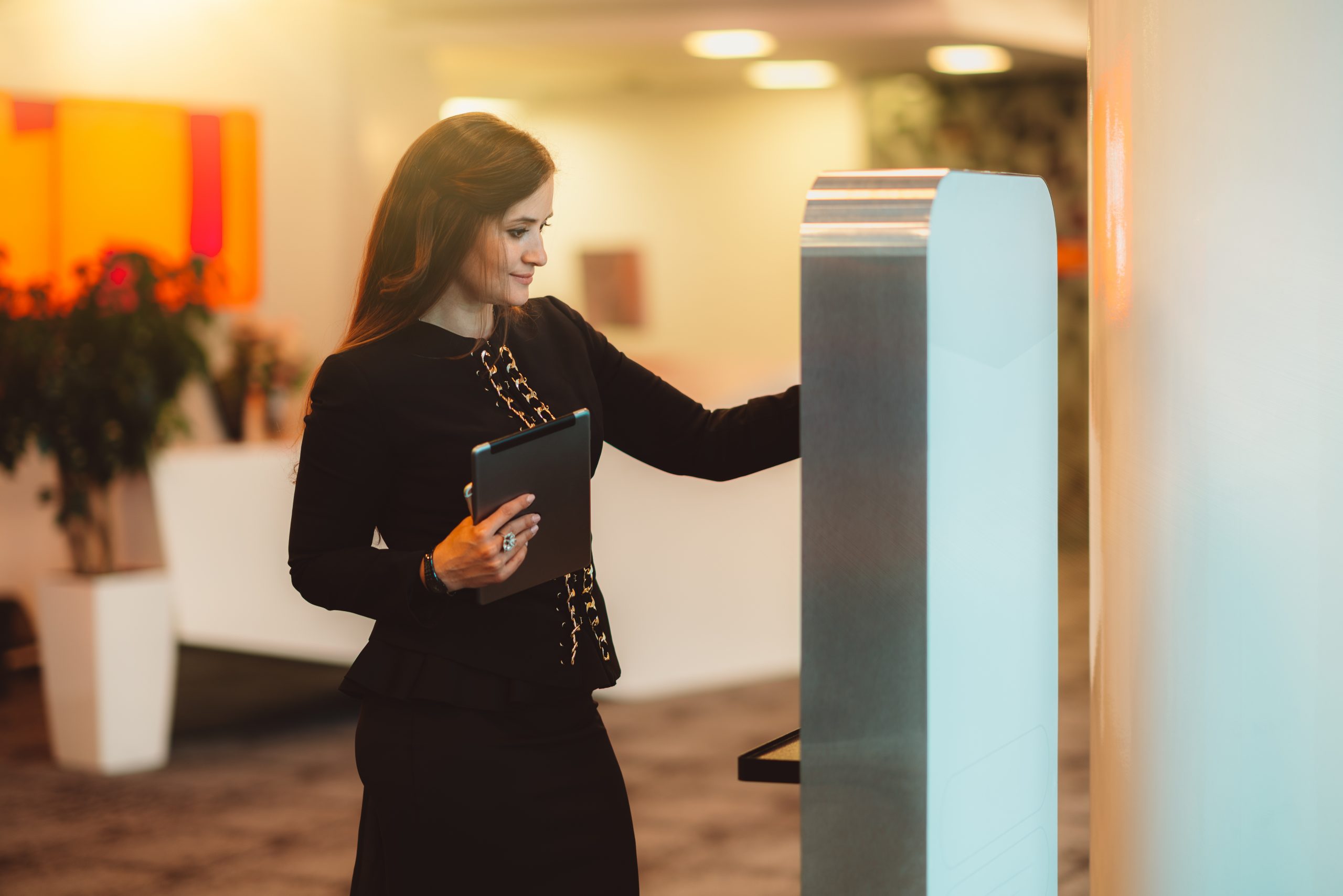
Yes — and it should.
Look for visitor management software (like Appspace), that integrates with your current tech stack, including:
- Calendar tools (Microsoft Outlook, Google Calendar)
- Collaboration platforms (Teams, Slack, Webex)
- Access control systems
- Employee directories and wayfinding systems
- Digital signage or kiosks
These integrations make check-in a breeze and help reduce friction for visitors, hosts, and admins alike.
How can visitor management software support compliance and audits?
If your workplace is subject to audits, inspections, or regulations (think ISO, HIPAA, GDPR, etc.), a manual process simply isn’t sustainable.
A solid visitor management system helps by:
- Storing time-stamped visitor logs
- Enforcing privacy/data retention policies
- Automating NDA acknowledgments
- Generating reports on demand
- Providing access history and activity trends
That means fewer gaps, better documentation, and peace of mind when audit season rolls around.
How is AI changing visitor management?
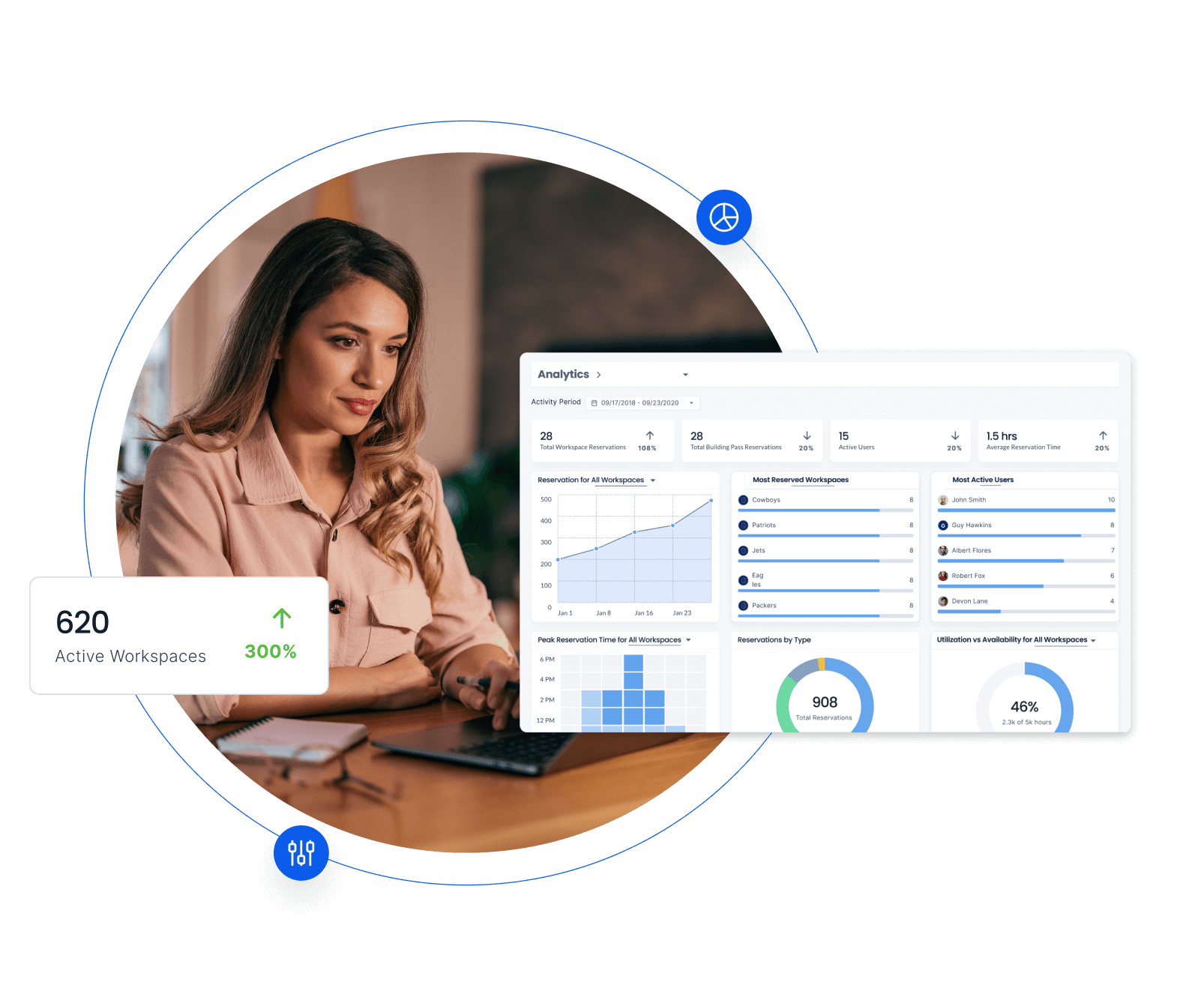
AI is changing how we welcome and manage guests, and the Appspace + Microsoft Copilot integration is a great example.
Copilot can register a visitor, book a room, and send invites in a single prompt. It recommends the best space based on needs and availability. Visitors get personalized greetings and directions. And security stays tight with automated watchlist checks and alerts. All without leaving Outlook or Teams.
What are some real-world use cases for visitor management software?
- HQ front desk transformation
A large corporate HQ eliminated check-in delays and front desk crowding with QR code-enabled kiosks. Visitors pre-register through calendar invites, check in on their own, and get printed badges instantly.
- Contractor oversight
A manufacturing site tracks third-party contractors with digital NDAs and time-limited access badges, improving accountability and safety.
- Multi-site consistency
A facilities team managing 12 locations uses a centralized platform to standardize policies, branding, and visitor workflows across all sites.
How do I get started with a visitor management solution?
Here’s a top-level, practical visitor management rollout plan for facilities and security managers:
- Map your current visitor workflow
Where are the bottlenecks, risks, or inconsistent practices? - Involve stakeholders
Coordinate with IT, reception, legal/compliance, and department heads. - Choose a pilot site
Start with a high-traffic location to test workflows, integrations, and user experience. - Define success metrics
Track visitor satisfaction, check-in time, host notification speed, and audit readiness. - Standardize and scale
Roll out across additional sites with templates and shared admin controls.
Is it time to upgrade your visitor registration system?
If you’re still relying on paper sign-ins, disconnected tools, or manual workflows, you’re leaving gaps in both security and experience.
The best visitor management software gives you real-time insight, consistent control, and a more professional front-door experience, without adding complexity for your teams.
It’s one of the simplest upgrades with the biggest payoff for both facilities and security leaders.
Explore Appspace Visitor Management. Or schedule a demo to see the platform in action.



